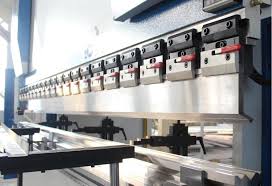In the world of modern manufacturing, CNC machines are the quiet workhorses—humming along in shops and factories, turning digital designs into precise parts with clockwork accuracy. But what actually makes up these mechanical maestros? At the heart of every CNC machine lie seven major components, each playing a vital role in shaping, cutting, and drilling with robotic precision.
Here’s a quick answer: The seven major parts of a CNC machine include the controller, machine control panel, spindle, axis motors, drive system, feedback system, and the machine bed or frame. Let’s break them down one by one—like a seasoned fitter laying tools across a bench.
What does the CNC controller actually do?
The controller is the brain of the CNC machine. Think of it like a conductor guiding an orchestra.
It interprets the G-code (a type of machine language) and sends signals to all the mechanical parts—motors, spindles, actuators—so they perform the required movements. Without it, the machine wouldn’t know the difference between a gentle tap and a full-speed bore.
Most modern controllers are made by companies like Fanuc, Siemens, or Haas, and are packed with capabilities like tool path optimisation, error checking, and real-time monitoring.
Why is the machine control panel important?
The control panel is your human interface—the steering wheel, gearstick, and dashboard rolled into one.
From here, machinists load programs, adjust speeds, jog the axes, and troubleshoot errors. It usually includes:
- A screen (LCD or touchscreen)
- A keypad or soft keys
- Emergency stop buttons
- Manual data input (MDI) mode controls
Anyone who’s operated one during a night shift knows the satisfaction of seeing all systems go green.
What role does the spindle play?
Ah, the spindle—the beating heart of any CNC machine.
It holds and spins the cutting tool, transferring power from the drive motor directly to the material. The spindle speed and torque must match the material and tool being used—too fast and you burn it, too slow and you chatter.
CNC machines may have:
- Belt-driven spindles (quieter but less torque)
- Direct-drive spindles (faster and more accurate)
- Motorised spindles (all-in-one units, often in high-speed machines)
Tool holders like BT, CAT, or HSK taper into these spindles, creating a rigid connection crucial for accuracy.
How do axis motors and drives move the machine?
If the spindle’s the heart, the motors and drives are the muscles.
Every CNC machine has motors assigned to its axes (usually X, Y, and Z). These are typically servo motors or stepper motors. Drives regulate how much power the motors receive and how fast they rotate.
Imagine them like a pair of mates hauling a load in perfect sync—any stutter or delay throws everything off. Precision here directly affects the finished product.
What is the drive system, and how does it impact precision?
The drive system converts rotary motor motion into linear motion to move machine components—like a stylus tracing a map.
It includes:
- Ball screws or lead screws
- Rack and pinion setups
- Linear rails and bearings
Ball screws are most common in precision CNCs due to their high efficiency and low backlash (play between parts). They’re like the unsung heroes—quiet, reliable, and crucial for repeatability.
What’s the feedback system for?
This is where it gets clever. Feedback systems—such as encoders and resolvers—tell the controller what’s really happening.
Imagine trying to write with your eyes closed. You need constant feedback to adjust pressure, angle, and movement. Encoders work the same way, providing data on position, speed, and rotation, allowing the controller to correct any drift or errors.
Closed-loop systems with feedback are more accurate but more complex than open-loop setups.
Why is the machine frame or bed such a big deal?
The frame or base of a CNC machine is often overlooked, but it’s the literal foundation.
Usually made from cast iron or steel, the bed supports all the moving parts and absorbs vibrations. A weak frame means poor surface finish, reduced accuracy, and early wear.
The design varies:
- Gantry-style frames for large components (common in aerospace)
- C-frame for vertical machining centres
- Slant-bed designs for turning centres (helps with chip flow)
Anyone who’s tried surfacing a warped table on an uneven base knows why this part matters.
FAQ: Quick answers for curious minds
Q: Can I upgrade just the spindle or motors on a CNC machine?
Yes, but only if your controller supports it. Otherwise, it’s like putting racing tyres on a Corolla—wasted potential.
Q: How many axes does a CNC machine usually have?
Most have 3 (X, Y, Z), but advanced models can have 4, 5, or even more.
Q: What’s the difference between a CNC mill and a CNC lathe in terms of parts?
Same core components, but lathes rotate the workpiece, while mills move the tool around it.
Final thoughts
Like any good system, a CNC machine’s parts work best when they’re aligned, precise, and well-tuned. From the humming spindle to the whisper-quiet ball screws, every component counts. Whether you’re in the trade, teaching apprentices, or just curious about how the stuff around you is made—understanding the guts of a CNC machine brings a deeper appreciation for its elegant choreography.
If you’re curious how these parts come together in practice, this overview of CNC Machining offers a good starting point.
And for a trusted external reference, check out this in-depth guide from Modern Machine Shop for a broader industry perspective.

